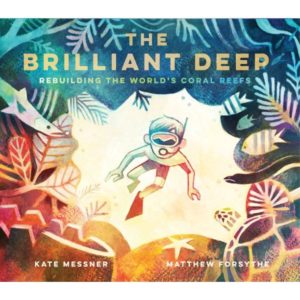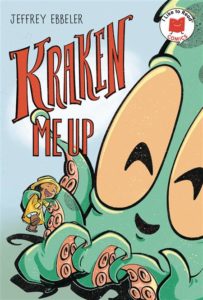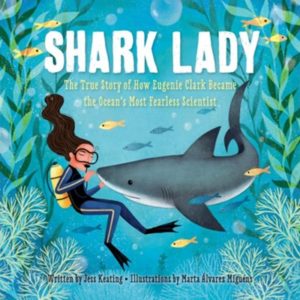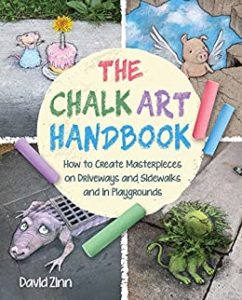The Happy Inbox by Maura Nevel Thomas
I have over 3,000 emails in one (of four) of my work-related inboxes, with at least a few hundred of those being unread. An informal, off-the-cuff poll of sorts of a handful of colleagues and friends revealed inboxes that ranged from containing only 17 emails (Congratulations!) to 20,000+, with 39, upwards of 6,000, and 10,000+ being the in-between numbers. That’s a lot of emails, folks. And most folks, like me and the majority I “polled,” have inboxes full of oodles of emails.
It’s no wonder then – regardless of whether the amount of emails in your inbox falls in the tens or tens of thousands range – that exorbitant time is spent on reading, writing, and sorting electronic correspondence. Frankly, it’s overwhelming! Fortunately, practical advice is offered in Maura Nevel Thomas’ The Happy Inbox: How to Have a Stress-free Relationship with Your Email and Overcome Your Communication Clutter, a book that’s part of her Empowered Productivity series.
Before getting practical about cutting the email clutter, a word about the publisher. Published by Simple Truths, this book, like other of their IGNITE READS titles, is meant to be read in an hour or less. An hour or less for what’s essentially an email self-help book is just about right, especially when considering time spent reading this book is less time spent contending with the inbox. All books in the IGNITE series, including the three Empowered Productivity titles, are readable in less than an hour, written by an expert, and fall into the “trending business and personal growth” categories.
Now, let’s talk about email! Arranged with an introduction, five chapters, and a conclusion, Thomas starts by saying that “our biggest productivity hurdle today might just be our communication–our crazy inboxes, our constant phone notifications.” She goes on to discuss how today’s professionals are in a constant state of “task switching” due to being tethered to our emails, phones, and social media.
Imagine: You’re working on a project that requires lengthy, in-depth attention. Your computer starts to “ping” with incoming emails. Your phone starts buzzing with work-related text messages. Your (work-related) Facebook, Instagram, and other social media accounts blow up with likes, comments, and messages. Perhaps you don’t have to imagine. Thomas describes this as “communication overload” that leads to what entrepreneur Henry Poydar dubbed “communication debt.”
According to Thomas, the first step of getting out of communication debt and regaining control, while being active and intentional rather than reactive, is to get your email under control. It’s helpful to have an understanding of how our inboxes impact our productivity (“attacks” is the word she uses), as well as the different types of emails we receive, before assessing our habits. Thomas describes a “skim and skip” behavior that is, admittedly, how I (and likely most people I know) check email. Then she tells us why that’s not effective. Foremost, “your inbox is for receiving messages, not storing them.” She further discusses how to make use of filters, unsubscribing from unwanted robomail, and how to create controls in your email application that would better help you stay on top of things (e.g. emails from certain domains could be automatically filtered to your trash folder).
Most of us tend to think of email as an in-between task, something that takes time away from “real work.” But, Thomas argues, email is real work. It’s not meant to be something we give partial focus to, but something that we have to allow time for and address in a thoughtful manner. Afterall, our board members, bosses, colleagues, customers, friends, etc. took the time to craft the email. The least we could do is give it our focused attention so that we may keep and/or strengthen our commitments. This is, however, easier said than done, especially on a jam-packed schedule and, these days, it seems everyone’s schedules are jam-packed. Nonetheless, I think recognizing email as real work is an accurate, if interesting, perspective.
In chapter two, “Being Reactive vs. Being Responsive,” Thomas discusses what we shouldn’t do with email, such as marking or flagging messages to come back to: “It’s not efficient to read the same email more than once.” Another tactic to avoid is leaving your inbox open so that new messages distract you from what you’re working on. She admits that if you’re accustomed to constantly checking your email – and many of us are – that it’ll be challenging to break that habit, especially if we’ve trained people to believe they’ll get an immediate response from us. (And if we have, then Thomas suggests we retrain them.) She offers advice on “reviewing” email, how often to review, and how to avoid getting stuck in “review mode.”
Chapter three discusses processing email in “done for now” fashion, meaning you don’t have to do all of the tasks associated with your emails, but take the steps to get them out of your inbox. Thomas outlines the specific steps necessary to process your email effectively–the TESST method: “Take immediate action; Empower others and yourself (delegate); Suspend it to your task list to take the required action later; Store it for future reference; or Trash it.” She describes each step in detail and includes a flowchart to better illustrate how to “Put [Your Emails] To The TESST.”
Chapter four offers advice for how to manage specific types of communication, such as email vs. text, team communication, phone, etc. and when to handle them (i.e. during business hours vs. outside of business hours). This chapter also touches on email composition and best practices.
Rather than deal with email management, chapter five discusses another drain on most professionals’ productivity: meetings. Thomas offers advice on how to kindly decline meetings that are not necessary, better prepare for meetings that are, setting goals and agendas, and choosing the right time of day, deciding who should attend, honoring the clock, and post-meeting tactics.
Although this is not typically the type of book I would read, I thought it could prove helpful in my professional life. Although I think that putting these tactics into practice would, in fact, be helpful, I wonder whether it’s practical – possible even – to take the time necessary to implement them. Thomas promises us, however, that the time it takes to implement is well worth the more efficient productivity level and, perhaps most importantly, a largely stress-free relationship with communication overload that betters the work/life balance. If you’re a professional experiencing communication overload, perhaps even burnout, then I recommend this title, especially since it’s not a lengthy read. Speaking of, I better get back to my emails.
As always, happy reading.







